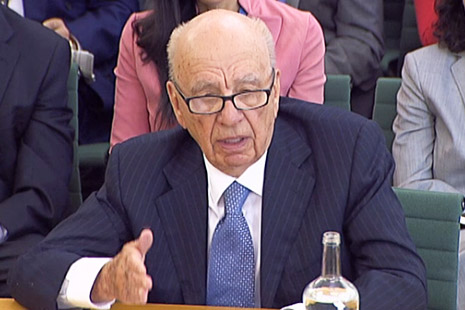THE MELTDOWN at News Corporation is already having positive effects on the way we think about the role of the contemporary news media. First among these is an acknowledgment that media ownership diversity really matters a great deal in democracies.
As the British establishment reels from the unravelling of corrupt practices in politics, the media and police ranks, and the related arrests and resignations, the message in flashing neon lights is that abuse of media power, commercial greed and public deception have been tolerated for far too long.
From the 1980s an unholy alliance of media conglomerates and governments has dominated the construction of media policy. The message from media corporations to governments has been that “you need to allow us to expand our media empires because that will be good for both of us.”
The good news is that the News of the World scandal has triggered a wider ethical reassessment of the presumed merits of this relationship. Media plurality, ownership policies, accountability and responsibility in media and politics are again being seen, quite rightly, as inseparably connected, as is the standard of journalism that flows from these corporate cultures.
There may be some good news for Australian media audiences in these events too. The Australian government is currently undertaking a root-and-branch review of policy frameworks through its Convergence Review. This presents a well-timed opportunity to revisit the values of media diversity in our media ownership laws.
The central purpose of the review is to gather views and make recommendations regarding the appropriate policies needed for Australia’s twenty-first-century media industries. Whether or not this kind of review is capable of delivering the necessary policy settings for what is, after all, a very dynamic industry remains to be seen. What is clear, however, is that without laws restricting concentrated media ownership, abuses of power are almost inevitable.
Audiences now get their news from a range of media, including online media, and legislation needs to take this into account. It’s not “too hard” to take account of the new environment, as deregulationists misleadingly claim; it just takes political will based on a consensus that it’s the right thing to do for Australian citizens and consumers. This is about taking a moral position, as politicians like Bob Brown have long realised.
In May this year, “private citizen” Lindsay Tanner explained the thesis of his new book, Sideshow. He made the important point that whether the views of politicians reach audiences very much depends on whether media outlets choose to transmit those views. “Who decides what goes on TV? Who decides what goes in the newspapers and on radio?” he asks. How can politicians influence media representation of events “unless you own a media outlet”? Tanner was shining a spotlight on the importance of policies that create the conditions for media diversity.
In 2006–07, Labor’s shadow minister for communications, Stephen Conroy, lambasted the Howard government for its proposed changes to ownership laws: “What we are going to see is a massive handing of concentration of media ownership to the most powerful people in the land already. This has got to be considered to be bad for democracy, bad for diversity of opinion and should be opposed.” The legislation passed, and now Australia has renewed its dubious distinction of having the most concentrated media among comparable Western democracies.
Those media ownership laws watered down cross-media restrictions and removed foreign ownership limits. As expected, there has been further consolidation in our print, television, radio and online media. News Limited titles comprise about 70 per cent of daily newspaper circulation; in Britain, News controls a significantly lower proportion of papers.
Concentration of media ownership in Australia can easily be seen in the steady reduction in titles and owners over the past century – a narrative repeated throughout most of the Western world. In 1903 in Australia there were twenty-one daily newspapers and seventeen owners in the capital cities. By the mid twentieth century there had been a gradual fall to fifteen dailies and ten owners. Now there are ten dailies and three owners (Fairfax Media, News Corporation, and West Australian Newspapers, the latter now controlled by commercial TV mogul Kerry Stokes’ Seven West).
Two companies, News Limited, a wholly owned subsidiary of Rupert Murdoch’s News Corporation, and Fairfax Media, control the metropolitan print markets, and much of the rural and regional press in New South Wales, Victoria, South Australia, Tasmania and the Northern Territory. They have diversified onto the web with all of their city, suburban and rural titles, grouped as the News Digital network, with over 135 generalist online news titles, and the Fairfax Digital network, with over 180 titles including five state farming news sites and four talk radio sites. These two major interests operate alongside lesser regional publishers, Australian Provincial Newspapers (APN News and Media) and West Australian Newspapers, which operate respectively in southern Queensland and northern New South Wales, and in Western Australia.
We haven’t yet seen the widespread, systematic corruption evident in Britain, but there are certainly frequent examples of biased news coverage. It has to be said that the history of favouring incumbent media owners in this country doesn’t augur well for future media policy-making.
Creating diversity laws for online news is the new challenge for our legislators. But are they up to it? •




